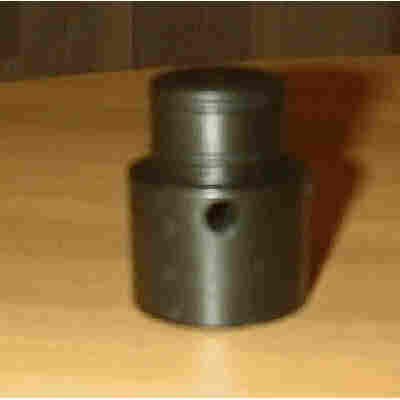Focus

Clarinet
Instructions for use
what is it for, how to
use, questions for the
practice, considerations, adapation to the instrument
The FOCUS was meant to help the musicians to identify
and resolve the problems caused by defects of emission: not correct speed and
air quantity, movements of throat, not continuous flow of air, tightened throat
that obstructs the sound.
what is it for, how to
use, questions for the
practice, considerations, adapation to the instrument
HOW TO USE IT
First of all, play the chosen musical phrase with the
instrument (if possible, at the beginning of your practice a phrase in which a
continuous flow of air is needed, or a scale that goes up and then down) then
repeat it with the FOCUS.
You must perform imagining the tones and trying to use
your body exactly as you did before with the instrument. The attention should
be addressed to the sound resulting this way.
Playing with the FOCUS the sound should be good,
continuous, with the diminuendo and crescendo determined by the melody and the
phrase. You should feel the sensation of easiness, spontaneousness of emission.
The movement of fingers, of tongue and of melody shouldn’t influence continuity
and quality of the sound, in the staccato too.
Irregular air flow (evidenced by an irregular volume
or by a different pitch) or movements of the embouchure or other things will be
evidenced.
Normally you must play in the same pitch: the
intonation of this sound can have very small variations when you decide to
change tone or you want use different resonance in the mouth or in the throat.
It's very interesting to compare whit other musicians
and verify which tone they play at source: for example the tone too high
in the FOCUS determines sound little and sour in the clarinet.
what is it for, how to
use, questions for the
practice, considerations, adapation to the instrument
So, studying with FOCUS, you have to listen very well
and ask yourself:
- Is
my airflow continuous (are there snaps or holes)?
- Is
the pitch regular?
- In
this difficult passage, is the sound good, resonant or dull, little, not
very alive?
- Is
there continuity and intensity when you play the dynamic piano?
- Are
my attacks played with continuity of air, or the tongue comes first and
the air second going fitfully?
- And
the end of tones?
- After
having breathed is the pitch the same?
- Is
this the right opening of the mouth in this low note?
- And
in this high one?
- Which
tone my professor plays?
- Is
this irregularity of the flow wanted for a musical intention or is it
casual?
- During
this trill, do I go on blowing or I become rigid and I modify the flow?
- How
is the intonation in the crescendo, in the diminuendo, when I start or
finish?
·
All the questions posed above and others that may
emerge from practice inevitably bring to FOCUS the attention, to try to correct
yourself, to try to blow with continuity, to be on pitch etc.
what is it for, how to
use, questions for the
practice, considerations, adapation to the instrument
The FOCUS cannot substitute the practice with the
instrument but it can help a lot in eliminating certain defects because in the
simulated play there is a "reset" effect in the emission.
My suggestion is to use it only a bit, as a reference
point to understand what happens within you, how you should blow when you are
playing. I think you can use it for five – ten minutes when
you practice.
Studying with FOCUS you can notice that it makes your
throat become wider, it relaxes it and allows the air to flow undisturbed: this
way you get conscious of the air column, that goes in continuum from diaphragm
to your lips: then you should try to reproduce this sensation with the
instrument, without being distracted by notes.
what is it for, how to
use, questions for the
practice, considerations, adapation to the instrument
ADAPTATION TO THE INSTRUMENT
Insert the FOCUS H between mouthpiece and barrel, the
FOCUS L between barrel and instrument.
In the case it will be difficult to insert it, raise
and move the OR out of the seat with a small screwdriver, scrape them with fine
sandpaper and put them back in the seat.
If it is too easy to insert it, put under the OR some
cigarette paper, or change the OR.
If instead the mouthpiece moves, you can internally
apply some nail varnish to the FOCUS.
FOCUS H has four holes: if you need normal resistance,
open two big holes; if you need more resistance, you can open one big and two
little holes.
Home, General instructions, Flute, Oboe, Clarinet, Bassoon, Saxophone,
Inventor,
References, Price list